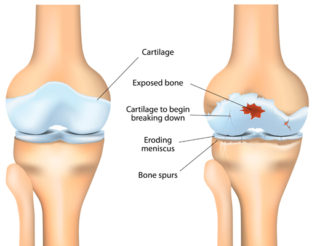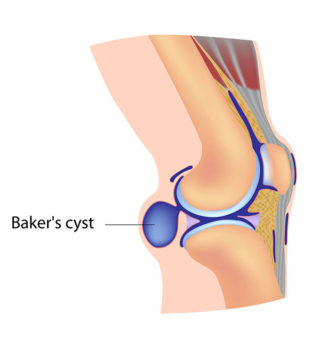“Roadtripophobia (n.) The fear of not having any road trips currently booked.“
With the weather improving (finally), many of us are looking out our windows and dreaming about road trips to anywhere but here. We’ve been stuck in one place for too long, and it’s time to explore new places! 😎
However, living with arthritis, back pain, and other musculoskeletal conditions can sometimes affect your ability to drive. Pain, fatigue, joint and muscular pain, and brain fog can make driving and sitting for long periods difficult.
That really sucks when your road trip playlist is ready to go, and a bag of kool mints is waiting in your console!
But we’ve got some tips to help you get your motor runnin’… so you can head out on the highway and look for adventure.
“Never underestimate the therapeutic power of driving
and listening to very loud music.” – Unknown
1. Talk with your doctor before you hit the road
If your condition sometimes affects your driving ability, talk with your doctor. Depending on the problems you’re experiencing, your doctor may suggest a range of self-management strategies to help ease muscle tension, reduce pain, prevent you from stiffening up too much, and allow you to move more freely. You can use these strategies in the weeks leading up to your trip and as you travel all over the countryside.
For example, simple things like regular exercise, pain management techniques, aids and devices, and supportive cushions can be a great help on a road trip.
Your doctor may also review your medicines to ensure they’re managing your condition as effectively as possible, with as few side effects (e.g. drowsiness) as possible.
This brings us to the next tip…
2. Know how your medicines affect you
Do your medicines affect your concentration? Do they make you sleepy? Or affect your coordination or reaction time? If so, talk with your doctor about whether there’s another medicine you can use that won’t have this effect on you.
Understanding the effect medicines can have and whether or not they’ll affect your ability to drive safely is extremely important. If you’re unsure, chat with your doctor or pharmacist.
Remember to pack any medicines you may need on your trip, whether you’re gone for an hour or days. Pain and flares can appear unexpectedly, so take a leaf out of the Scout guidebook and ‘be prepared’.
3. Wear comfy clothes
There’s nothing worse than driving for a while and realising you’re wearing the absolute worst clothes for the trip. Your shoes are restrictive, your top doesn’t breathe, and your jeans are giving you an atomic wedgie! 😫
Road trips are fun, so you should feel relaxed and comfortable in the clothes you wear. Choose clothes with some give that allow you to stretch and move around easily, and are appropriate for the weather.
If you want to look more put together at the end of your trip, take a change of clothes and get changed at a rest stop close to your destination.
And don’t forget to pack a raincoat, sunhat and sunscreen – it’s Australia, after all. We can have all the seasons in one day! 🌞☔🌈⚡
4. Plan your trip
Planning and prepping will make you more confident during the drive and reduce the risk of stressful surprises. It also helps to build anticipation for the journey ahead.
- Make sure your car is ready for the trip. Book it in from a service to ensure tyres, fluids, brakes etc., are up for the drive.
- Print your maps or enter the route into your GPS. Plan your rest stops, fuel stops, and places you want to visit along the way.
- If you’re making a long trip, stop every hour, get out of your car and stretch. Give yourself plenty of time; you don’t want to feel tense or rushed. Tension and stress can make your muscles tight and increase your pain levels. So take time to go slow and enjoy the ride. 😊
- Be aware of changing road conditions. Much of Australia has had extensive rain and floods. This has caused many potholes to form, making driving stressful and potentially damaging to your car. Hitting a pothole can also cause significant jarring, increasing your muscle and joint pain. Read the RACV article: Stay alert, slow down, don’t swerve for info on how to safely navigate potholes.
- As far as flooding goes, the information is clear – avoid flooded areas, and never drive through floodwaters. If you’re not sure about the state of the roads on your route or where floodwaters are, visit the website of your local roads authority and state emergency services.
“There is nowhere to go but everywhere,
so just keep on rolling under the stars.”- Jack Kerouac
5. Get comfortable in the car
Before you hit play on your playlist and set off, carefully adjust your seat and mirrors. If your feet and ankles are stiff, move your seat forward to push the pedals with your entire foot, not just your toes. Make sure your seat’s height lets you control the pedals without being uncomfortable. You should be able to reach and operate all of the controls, pedals, steering wheel etc., and have good visibility through your windows and mirrors.
If you have pain in your hips or legs, consider using a cushion that supports the lumbar spine, hips and buttocks. You can find these at chemists, auto shops, and any store that sells aids and equipment. Or you can see an occupational therapist for info and advice. Just be sure to do all of this before your trip, so you can try out the cushion to ensure it helps and doesn’t aggravate your condition.
Remember to empty your pockets of keys, wallet, small change and other bits and pieces. They can cause irritation and pain – especially if you have a long drive ahead.
6. Take breaks and notice the world around you
Don’t drive for more than an hour without a break. Stop, get out of your car, and stretch or massage tight muscles. Walk around. Drink some water. Check out what’s nearby – a coffee shop, a historical marker, or a breathtaking view. It’s incredible how much you can discover when you stop and look around. And the break will help you feel better and more relaxed at your destination than if you’d driven straight through.
Build these breaks into your overall trip time so that you have plenty of time to get from point A to point B safely and comfortably.
“Because the greatest part of a road trip isn’t arriving at your destination.
It’s all the wild stuff that happens along the way.” – Emma Chase
7. Stay hydrated and eat well
Water lubricates and cushions your joints, aids digestion, prevents constipation, keeps your temperature normal and helps maintain your blood pressure. When you’re not getting enough water, your body can’t work as well as it should. So make sure you fill your water bottles before you set out and take time to drink from them.
Pack healthy snacks like unsalted nuts, pre-cut fruit and veg, trail mix, or cheese and crackers. Check the nutrition panel to ensure they’re not high in fat, sugar or salt.
Alongside the healthy snacks, you may decide to add a road trip treat (because you’re only human 😉). For my family, that’s always been kool mints or snakes. Yum! 😛
8. Manage your fatigue
You may experience fatigue or intense tiredness due to your condition, the effects of some medicines, or lack of sleep. So plan around your fatigue. For example, if you’re generally fatigued most days around 3pm, plan to do your driving before this.
Your driving ability is compromised when you get tired, or your pain worsens. So don’t drive when you’re feeling foggy or sleepy. Share the driving with others. When you’re not the driver, you can keep the music playing, be the navigator, quiz master, or lolly dispenser. Or just put your head back and rest.
“You can pack for every occasion, but a good friend
will always be the best thing you could bring.”- Unknown
9. Check out aids and gadgets
There are many aids available to help make driving more comfortable, including:
- A swivel seat cushion to help you get in and out of the car. You pop it on top of your car seat, sit on it with your body facing out and then swivel your body and legs aroundto face the dashboard.
- A lumbar back support or a rolled-up towel to support your lower back.
- A steering wheel cover can help make your steering wheel easier to grip if you have stiff, sore hands.
- If you find it difficult to twist the petrol cap on or off, try using a petrol cap turner. It’ll make twisting the cap easier.
- Grab handles and bars can be added to your car to help you get in and out of your car more easily.
- A seat belt reacher can help reduce arm and shoulder strain when reaching for your seat belt and pulling it across your body.
- Reversing cameras and parking sensors are available in most new cars and can be added to older ones. They can make parking and reversing easier if you have problems twisting, turning your neck or looking over your shoulder.
Talk with an occupational therapist for information and advice about what aids or gadgets may be helpful for you.
10. Use heat and cold treatments
Applying heat or cold to painful areas before you head out in your car can help relieve your pain. Generally speaking, heat can ease muscle spasms and tension, and cold can reduce swelling. Heat and cold treatments are available in a wide range (e.g. packs, rubs, gels, patches). Some are portable and can be left in your glovebox or bag, so you have them on hand when you need them. Always read the instructions carefully before using them.
11. And have fun!
Heading out on a road trip is a time-honoured tradition because it’s fun, gets us out of our bubbles, and leads to new and exciting adventures. So take some time to plan and prepare, and enjoy the journey! 🚗
“It doesn’t matter how old you get, buying snacks for a road trip should
always look like an unsupervised 9 year old was given $100.”- Unknown 😁😂
Contact our free national Help Line
Call our nurses if you have questions about managing your pain, musculoskeletal condition, treatment options, mental health issues, telehealth, or accessing services. They’re available weekdays between 9am-5pm on 1800 263 265; email (helpline@msk.org.au) or via Messenger.
More to explore
- 8 tips for road trips with a chronic illness
The Mighty - 12 ways to make road trips and car rides easier when you have arthritis
Creaky Joints - 15 to float
Victorian State Emergency Service - Road trip tips for arthritis
Arthritis Foundation - Stay alert, slow down, don’t swerve: how to avoid and safely navigate potholes
RACV - Understanding chronic pain and driving
RECOVER Injury Research Centre, The University of Queensland





















